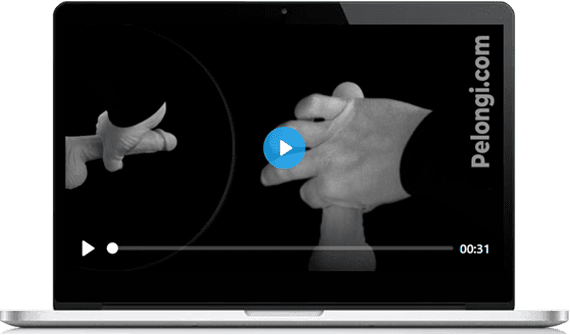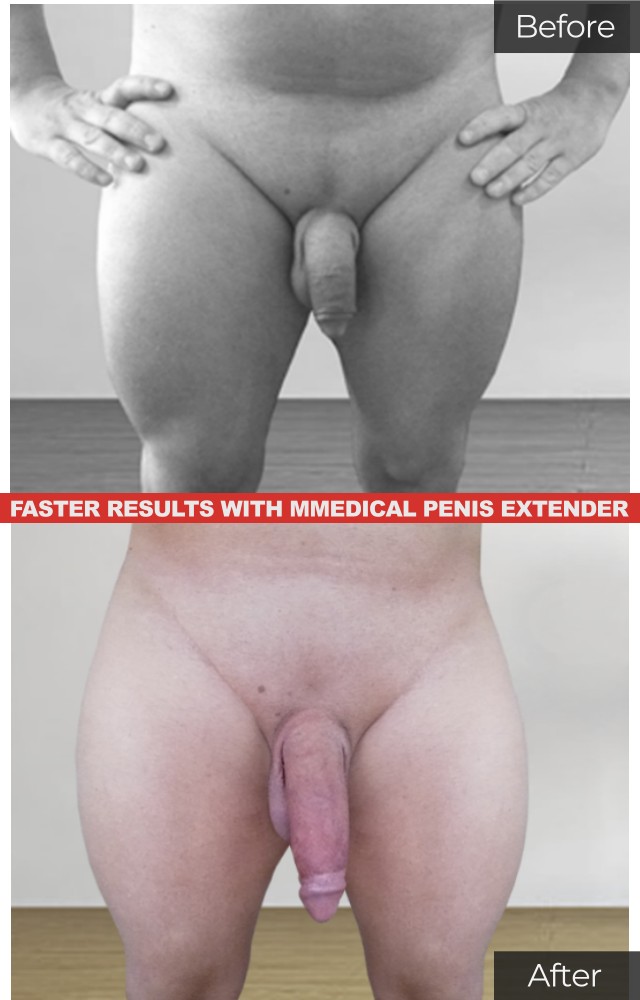Wet Jelq penis girth exercise
Results
- • Increase penis girth
Instruction
- • for Beginners
Workout Time
- • Max. 30 minutes
- • 3x a week
Exercise
- Erection: 40-80%
- Exercise: beginners
- Difficulty: easy
- Intensity: low
- Injury risk: low
- Combo exercise
- Video
The Wet Jelq for more penis size is one of the primary penis enlargement exercises. The continues Jelqing squeeze forces more blood into the corpora cavernosa which will expand and stretch the cell walls to allow larger quantities of blood to enter the penis. Jelqing is mostly considered a girth exercises, but some have reported substantial length gains from it. For more information and background on this technique, see our overview page: TOP 5 Jelqing Exercises.
- Alternative name:
- none
- Anatomical focus:
- Erectile tissue (vertical)
- Glans penis
- Tunica
- Practice family:
- Jelqing
- Related exercises:
- Dry Jelq (Beginners)
- Side Jelq (Beginners)
- Vertical Jelq (Beginners)
- High-EQ-Jelq (Advanced users)
- Low-EQ-Jelq (Advanced users)
- This penis enlargement exercise mainly targets penis girth, penis length and increases:
- erect glans size
- erect penis girth
- erect penis length
- flaccid glans size
- flaccid penis girth
- flaccid penis length
Tutorial
Apply lubricant to hands and penis.
Bring penis to the suggested erection level.
Create a standard OK-grip or overhand OK-grip around the base of the penis. Place the grip as close to the pubic bone as possible.
Tighten the base grip and slowly slide hand up to the glans, squeezing the penis for the duration of the suggested rep time. Apply enough pressure to force the blood up the penis.
Stop hand directly before it reaches the glans. You have completed one Jelq stroke.
While still holding the grip below the glans, create a standard OK-grip or overhand OK-grip around the base of the penis. Place the grip as close to the pubic bone as possible.
Release the hand below the glans and return to step 4 until reaching the suggested number of reps.
Video
Background
Jelqing is probably the oldest PE exercise and was already used in the Arabic cultural area several thousand years ago. More important than its ancient history, however, is its varied application, which is classified according to the degree of erection intensity used (low-EQ, mid-EQ and high-EQ) as well as the use of lubricants (Wet Jelq) or the renunciation of it (Dry Jelq). The different variants also differ in their primary exercise effect, which is why their application method should be chosen carefully. The Wet Jelq presented in this article is also called Mid-EQ-Jelqing. It works with a medium erection intensity or quality (hence the prefix "Mid-EQ") and is considered one of the most effective exercises for promoting erect penis length (more precisely: BPEL). At the same time, Jelqing can also be helpful in widening the circumference of the penis (EG), but Mid-EQ Jelqs have only a relatively minor effect in this area.
In contrast to the blood stagnation procedures (such as the Erect Squeeze or the Uli Squeeze), Jelqing moves the blood through the cavernous bodies by applying external pressure and ultimately concentrates it in the front cavernous body areas. It is important with regard to the work-out of the erectile tissue, however, not the extreme congestion (as in the blood stagnation procedures), but above all the movement of the blood when crossing the shaft from the root of the penis to the glans. In principle, Jelqing (besides stretching) is one of the two basic exercises of the manual PE-workout, which you will not only encounter in the beginner's program, but will also remain part of the vast majority of workout programs much later. That is why it is all the more important to consolidate your own Jelqing technique through routine and to improve it over time.
Workout
The Wet Jelq or Mid-EQ-Jelq requires an approximately 40 to 80% erect penis (no more).This means in detail that the penis should be more than half erect, but if possible not fully erect. The Jelqs themselves accumulate the blood in the penis during the exercise, so a higher erection intensity would drastically increase the stress on the penile tissue. Especially for beginners it is therefore important to take care not to Jelqing above an EQ of 80%. Wet Jelq workout are performed with a lubricant, as this is gentle on the skin and thus prevents injuries.
Additional Information
The following notes treat common questions regarding this exercise and provide further explanations of its fine-tuning and possible modifications.
- Recommended lubricants:
-
In Wet Jelqing, a wide variety of means can be used to ensure that the exercise runs as smoothly as possible. On the one hand, any kind of care oil (e.g. baby oil or massage oil) that does not contain irritants (these can attack the glans mucosa and should therefore be avoided) is suitable. Most edible oils (e.g. sunflower oil or olive oil) can also be used for workout without hesitation. On the other hand, care creams and lotions can also be used (e.g. classic body lotion or hand creams), although there are even products in this segment that are specially designed for use on the penis. Healing ointments (e.g. Bepanthen or Zinc ointment) can also be used, whereby it is all the more important to make sure that the ointment is not a heat, pain or muscle ointment (such as Finalgon or Voltaren). These irritations of the mucous membranes of the glans and the sensitive skin of the shaft are extreme and can cause great pain or cool numbness - neither of these conditions are conducive to workout. In this respect, one should also be careful when using zinc ointment, as it has a drying effect that may irritate the mucous membranes of the glans. In general, all the listed remedies have their advantages and weaknesses: While oils retain their gliding properties for a very long time, they can only be removed afterwards by thoroughly washing your hands and intimate area. Creams, lotions and ointments, on the other hand, are absorbed quickly (so they have to be taken now and then during exercise), but do not require any additional cleaning (and also care for the penis skin). However, the consistency of ointments is often a problem, e.g. zinc ointment is very tough and therefore only has comparatively low sliding properties. All in all, the use of commercially available body care creams or lotions is usually preferable. The reduced cleaning effort after the workout and the skin care properties are considerable advantages for the workout design. In case of doubt, however, one should simply test for oneself which lubricant is most pleasant for oneself.
- Intensity regulation during Jelqing:
-
As basic as the Jelqing exercise is, it can be difficult to find an appropriate execution technique. Especially beginners often find it difficult to choose a suitable Jelqing intensity - and then often take too much of a precautionary approach. To find a more suitable technique, however, it must first be clear what options are available to regulate the Jelq intensity. There are basically three possibilities: the current erection intensity that prevails when performing Jelq, the pressure of the grip when performing Jelq and the speed of Jelq performance. The erection intensity (also called EQ) is the foremost and most important factor: with mid-EQ Jelqs the EQ should not exceed 60-80%. The pressure of the OK-grip should in turn only slightly surround the shaft and in no case squeeze the erectile tissue. Meanwhile, the speed is the most important factor for the risk of injury: If a Jelq is performed with too high an EQ and/or too much pressure at high speed, the risk of injury (e.g. bleeding, hematoma) increases considerably, since the intensity of the Jelq has a comparatively sudden and jerky effect on the tissue. If in doubt, one should therefore first execute relatively slow Jelqs (2-3 seconds per Jelq) before accelerating them a little. In general, you should never need less than 1 second per Jelq unless the pressure of the grip or the EQ is really low.
- Intimate Shave:
-
An intimate shave is useful for Jelqing in that it prevents disturbing, longer hair from getting into the OK-grip and then disturbing the flow of the exercise. Of course it is not absolutely necessary to remove all pubic hairs completely (e.g. by a wet shave), but to trim them to a sufficiently short length (e.g. with a simple short hair trimmer).
- First tunica, then erectile tissue:
-
In the context of a workout program, if in doubt, one should always first do a Basic Stretch and then the Jelqing. This guarantees that the increased blood influence in the corpus cavernosum through Jelqing does not block or reduce the effect of the stretching (the stretching of the tunic). In addition, the subsequent Jelqing promotes the blood circulation of the penis, which is reduced during stretching. If possible, not too much time should pass between stretching and Jelqing - also in order not to shorten the regeneration phases between the workout sessions unnecessarily.
- Previous exercise
- Side Jelq
- Next exercise
- Vertical Jelq






